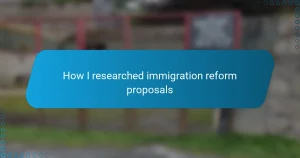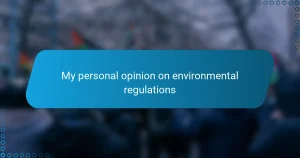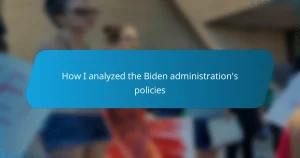Key takeaways
- Understanding Supreme Court decisions requires unraveling dense legal language and recognizing the societal implications behind the rulings.
- Recent cases highlight the balance between principles like equal opportunity, voting rights, and environmental concerns, raising questions about future societal values.
- Supreme Court rulings significantly impact US politics, influencing party strategies and voter engagement, often energizing or alienating different groups.
- The practical implications of decisions shape everyday realities, affecting areas such as voting access, environmental regulations, and public welfare.
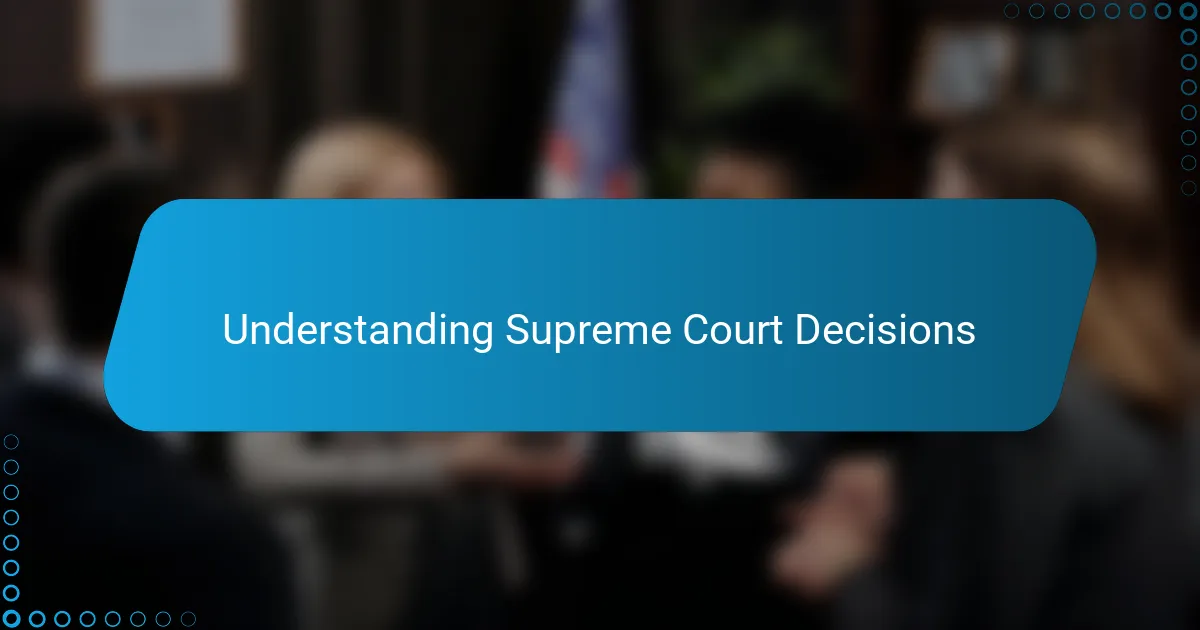
Understanding Supreme Court Decisions
Understanding Supreme Court decisions often feels like navigating a maze without a map. From my experience, the language used in opinions is dense, filled with legal jargon that can obscure the real impact of the ruling. Have you ever wondered why a single phrase can change the course of justice for millions?
When I first tried to make sense of these decisions, I realized they are not just about the law but also about interpreting the Constitution in a living, breathing society. The justices’ personal philosophies seep into their judgments, which makes some rulings feel almost like predictions of how our country’s values will evolve. This complexity is what makes Supreme Court decisions both fascinating and, at times, frustratingly opaque.
It’s easy to feel disconnected from these high court verdicts, but understanding them requires asking tough questions: What precedent is being set here? How will this affect everyday Americans? These inquiries helped me see that behind each decision is a profound dialogue about the kind of nation we want to be. Don’t you think that kind of reflection is worth the effort?
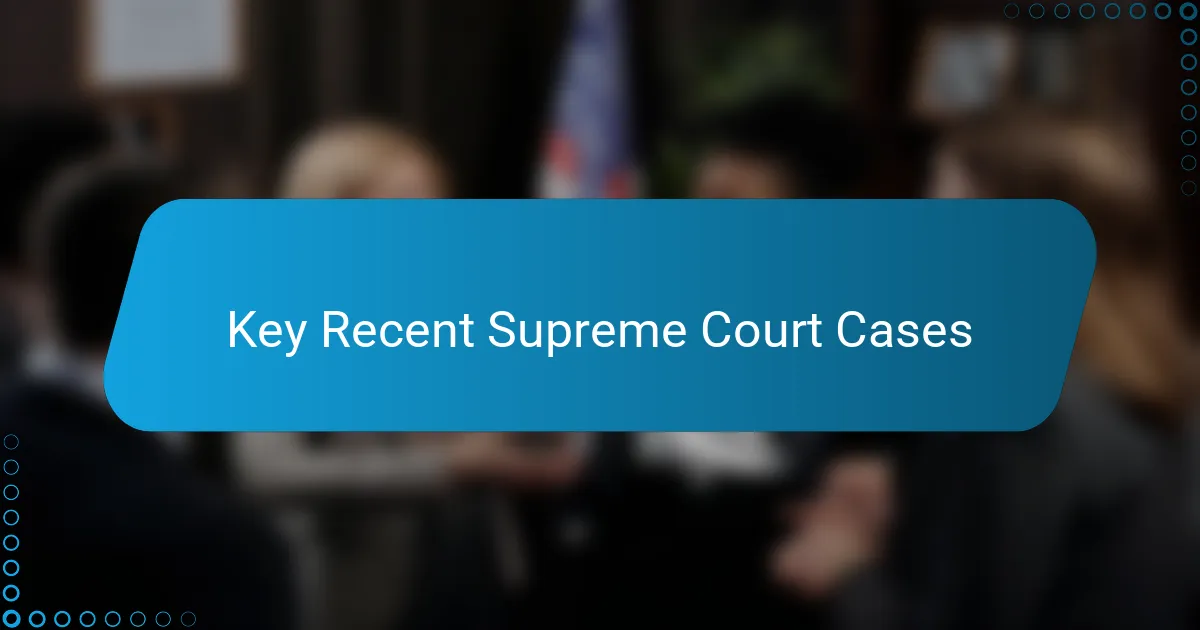
Key Recent Supreme Court Cases
One recent Supreme Court case that grabbed my attention was the ruling on affirmative action in college admissions. It made me reflect on how the Court balances principles of equal opportunity with concerns about fairness and merit. How do you think such a decision shapes the future of diversity and inclusion in education?
Then there was the controversial case involving voting rights, which, in my view, revealed the ongoing tension between states’ authority and the protection of fundamental democratic processes. Seeing this unfold, I wondered: are we witnessing a turning point in how accessible voting will be for all Americans?
Finally, the Court’s decision on environmental regulations struck me personally because it highlighted the clash between economic interests and urgent climate concerns. Do you ever feel frustrated when legal rulings seem to sideline science in favor of other priorities? This case definitely left me pondering that dilemma.
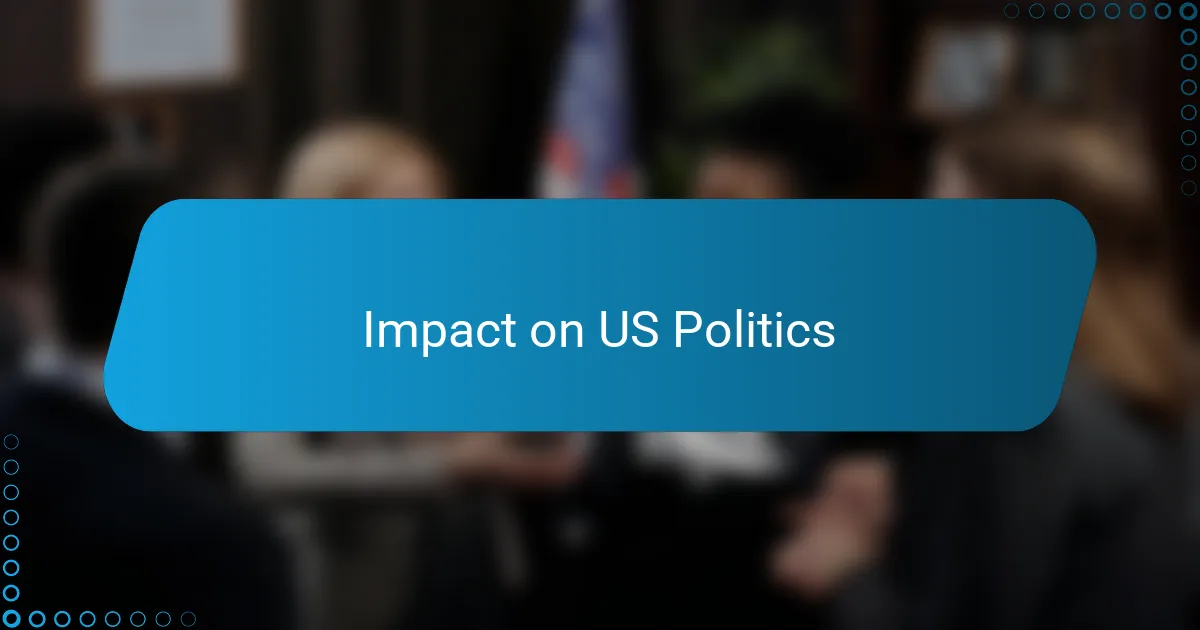
Impact on US Politics
The ripple effects of Supreme Court decisions on US politics are profound and, frankly, sometimes unsettling. I often find myself caught between admiration for the Court’s ability to shape national policy and concern over how its choices can deepen political divides. Have you noticed how a single ruling can send parties scrambling, retooling their strategies and messages almost overnight?
From my perspective, these rulings don’t just settle legal disputes—they recalibrate power dynamics between the branches of government and within political parties. For example, when a decision shifts voting rights or affirmative action policies, it triggers intense legislative and grassroots responses. It’s like watching a high-stakes chess game where every move redraws the political landscape.
I’ve also observed how Supreme Court decisions influence voter sentiment and engagement in unexpected ways. Sometimes, a controversial verdict energizes certain groups while alienating others, shaping election outcomes for years. Have you ever felt that surge of civic passion or frustration after a ruling? That’s the real impact on politics—transforming legal opinions into living political action.
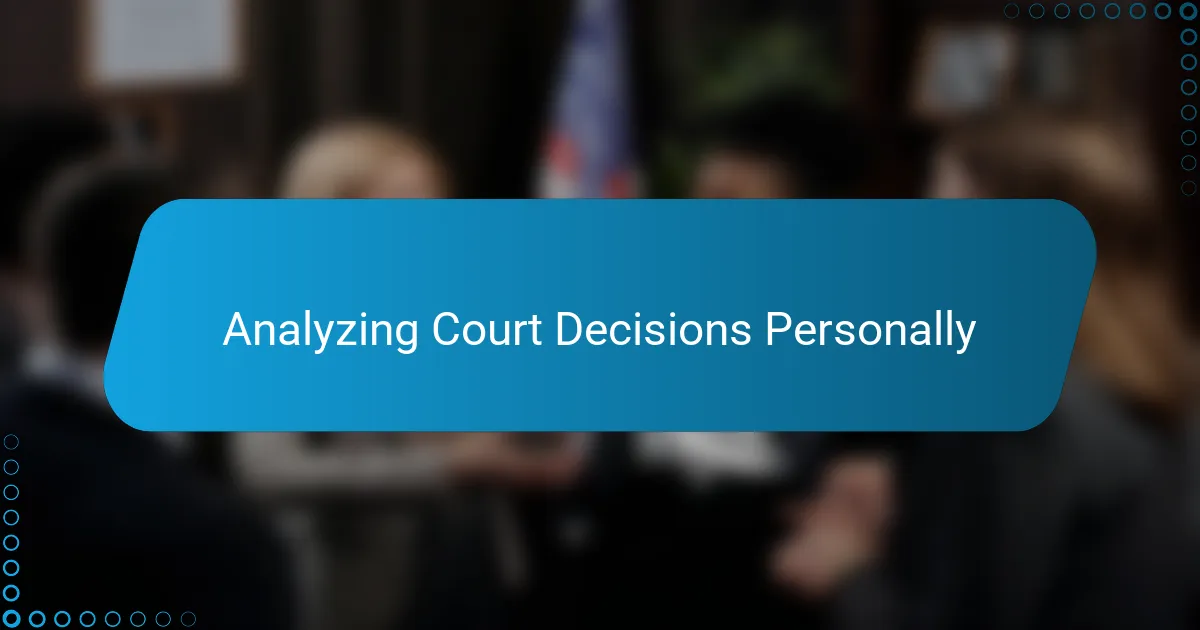
Analyzing Court Decisions Personally
When I analyze Supreme Court decisions on a personal level, I try to peel back the layers beyond the legal language to understand the human stories they affect. It’s not just about what the Court says but how those words resonate with everyday people—sometimes sparking hope, other times igniting frustration. Have you found yourself feeling that mix of emotions when hearing about a controversial ruling?
Sometimes, breaking down the reasoning behind a decision feels like wrestling with a complex puzzle, where the pieces are shaped by history, politics, and personal beliefs of the justices. I’ve caught myself debating with friends or jotting down notes just to grasp how these abstract principles land on real-world issues. Doesn’t digging into these nuances help us feel more connected to a process that often seems distant?
What strikes me most is how these analyses force us to confront our own values—do we prioritize individual rights, societal welfare, or something else entirely? Reflecting personally, I see that wrestling with these questions deepens my understanding of both the Court and myself. How often do you pause to consider your own stance when a ruling shakes the foundation of familiar norms?
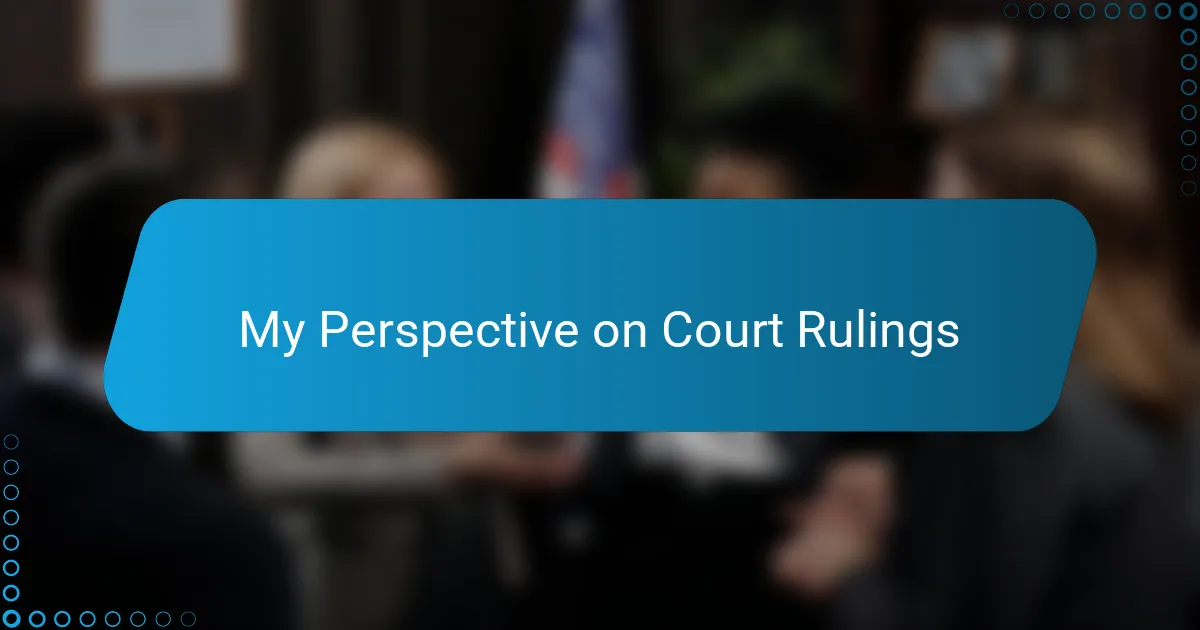
My Perspective on Court Rulings
Sometimes, I find myself grappling with Supreme Court rulings that seem clear on the surface but reveal deeper contradictions the more I think about them. Have you ever felt that a decision respected legal principles yet seemed disconnected from everyday realities? That tension is what keeps me both curious and cautious about these judgments.
From my experience, my perspective on court rulings isn’t fixed—I shift as new information or societal changes come to light. A ruling that once seemed progressive might later feel restrictive, depending on how its consequences unfold. This fluidity reminds me that understanding these decisions is an ongoing conversation, not a final verdict.
What I appreciate most is how these rulings challenge me to examine my own beliefs and the values I hold about justice and fairness. When a judgment upends what I thought I knew, I’m pushed to reconsider: Is this legal interpretation shaping a more inclusive future, or is it reinforcing old divisions? These questions keep my perspective lively and open to change.
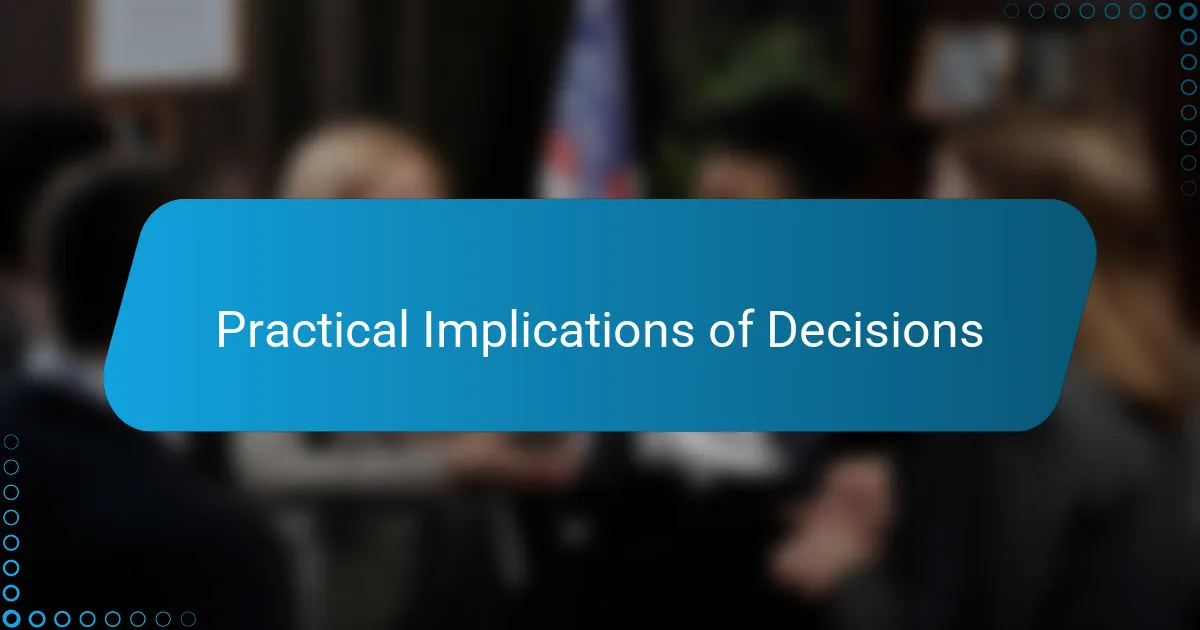
Practical Implications of Decisions
The practical implications of Supreme Court decisions ripple far beyond the courtroom, touching the daily lives of everyone. I remember reading a ruling that redefined voting access and realizing immediately how it would affect my community’s ability to participate in elections. Isn’t it striking how a legal text can translate into concrete barriers or opportunities for millions overnight?
Sometimes, the effects feel almost invisible at first—shifts in regulatory power or changes in governmental authority that don’t make headlines but alter how policies are enforced. From my perspective, understanding these subtleties is crucial because they shape everything from environmental protections to healthcare access in ways that directly impact people’s wellbeing.
Have you noticed how businesses, schools, and even local governments scramble to adjust after a major decision? I’ve seen firsthand the strain and confusion that can follow when institutions must quickly interpret new legal boundaries. These practical adjustments highlight the real-world stakes behind what might seem like abstract judicial opinions.
